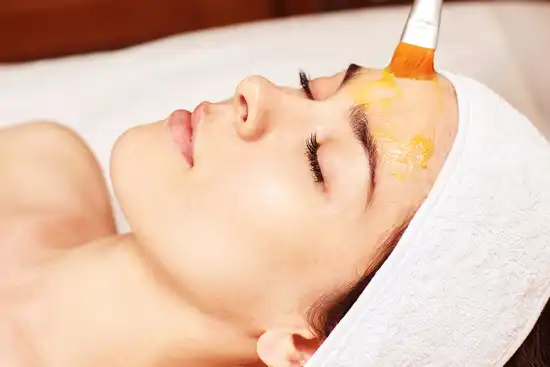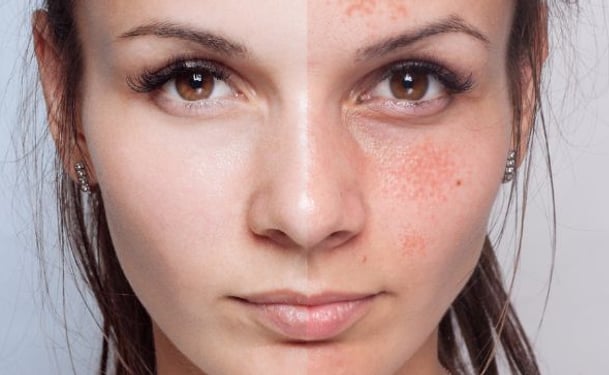Chemical peel jewelry is a popular trend in body modification. It is also known as ‘gothic’ or ‘industrial’ piercing jewelry. Chemical peel jewelry can be worn on the skin of the lips, nose, cheeks, forehead and ears. The jewelry is made with small metal balls that are attached to a barbell which is inserted into your skin.
Chemical peels are a way of removing the outer layer of damaged skin cells. After a chemical peel has been performed, new healthy skin cells grow and replace these damaged cells. Chemical peels can be done at home or by an aesthetician in a salon or spa setting. The process usually lasts anywhere from three to five minutes depending on how much time it takes for your skin to heal after each treatment session so there’s no need to worry about having too much time off from work or school if you decide to go this route!
Read on to learn more about What To Know About Chemical Peel Jewelry, Who Is a Good Candidate For a Chemical Peel?
What To Know About Chemical Peel Jewelry
It doesn’t feel so long ago that the words ‘chemical peel’ would conjure up images of Sex and the City‘s Samantha Jones, red-raw after a treatment gone awry. But skin peels have come a long way since the reductive methods of decades past, and are now a much-utilised treatment for a variety of skin concerns, from wrinkles to pigmentation (and much more in-between).
So common – and controlled – are today’s skin peels, that some can be performed with zero downtime, while others require a little more commitment, yet deliver remarkable results. Others can be done at home to maintain results. Here, dermatologist and director of Eudelo clinic Dr. Stefanie Williams, and dermatologist and co-founder of Kivu Skincare, Dr Benedetta Brazzini, break down everything you should know about chemical face peels, from the different types to the benefits they can deliver, and that all-important aftercare.
#SkinSchool: How to treat sun-damaged skin
by Harper’s BAZAAR UK
Video Player is loading.
CLICK TO UNMUTEPrevious VideoPauseNext VideoUnmute
Current Time 0:00
/
Duration 4:10
Loaded: 0.00%Fullscreen
What exactly is a chemical peel?
According to Dr Williams, chemical peels work by removing certain layers of the skin, and the layers they reach depends on their depth. “Peels exfoliate the skin, improving cell turnover and skin renewal, but they also indirectly encourage collagen and elastin formation,” she explains. “Chemical peels, despite being very low-tech, can be highly effective on a clinical and cellular level, and are in my opinion greatly undervalued.”
Peels can be performed using a variety of ingredients. Glycolic acid, salicylic acid and other exfoliating acids are often used, and your practitioner will tailor your active ingredients to suit your skin type and the desired outcome.
What are the benefits of a chemical peel?
“A peel can be a very effective way of softening fine lines and wrinkles, improving skin texture, minimising pigmentation and even reducing blackheads and whiteheads,” says Dr Williams.
ADVERTISEMENT – CONTINUE READING BELOW
This content is imported from Instagram. You may be able to find the same content in another format, or you may be able to find more information, at their web site.
Which depth is best?
There are four main strengths and depths of chemical peel. Very superficial peels work on the dead surface cells only, and can be performed in-clinic or at home with over-the-counter products (more on that below). In the clinic, superficial peels work on the epidermis, while medium-depth peels target both the epidermis and the upper dermis. Deep peels travel down to the lower layers of the dermis. “The exact strength of the peel should always be tailored to the patient’s individual skin and needs,” says Dr Williams.
RELATED STORY

Everything you need to know about the skin barrier
Most superficial peels don’t involve much downtime. “Hydroxy-acid peels are great starter peels and also well suited to younger patients or those who prefer their skin not to be visibly flaking after treatment,” says Dr Williams. “Superficial peels are mild and the most commonly used type for improving skin texture and overall complexion. They work by removing part of the stratum corneum and sometimes the upper epidermis. They can improve discolouration, surface roughness and texture, but also stimulate collagen production via communication between epidermal and dermal cells. With a superficial peel, you’ll achieve a more refined skin surface with a fresher, more vibrant skin tone and improved skin texture,” she says.
Chemical peel side effects

Chemical peels can improve the skin’s appearance. In this treatment, a chemical solution is applied to the skin, which makes it “blister” and eventually peel off. The new skin is usually smoother and less wrinkled than the old skin.
Chemical peels can be done on the face, neck, or hands. They can be used to:
- Reduce fine lines under the eyes and around the mouth
- Treat wrinkles caused by sun damage and aging
- Improve the appearance of mild scars
- Treat certain types of acne
- Reduce age spots, freckles, and dark patches (melasma) due to pregnancy or taking birth control pills
- Improve the look and feel of skin
Areas of sun damage may improve after chemical peeling.
After a chemical peel, skin is temporarily more sensitive to the sun, so wear sunscreen every day. It should say “broad-spectrum” on the label, meaning it protects against the sun’s UVA and UVB rays. Also, it should be a physical sunscreen and be above SPF 30. Limit your time in the sun, especially between the hours of 10 a.m. and 2 p.m., and wear a wide-brimmed hat.
Who Is a Good Candidate For a Chemical Peel?
Generally, fair-skinned and light-haired patients are better candidates for chemical peels. If you have darker skin, you may also have good results, depending upon the type of problem being treated. But you also may be more likely to have an uneven skin tone after the procedure.
Skin sags, bulges, and more severe wrinkles do not respond well to chemical peels. They may need other kinds of cosmetic surgical procedures, such as laser resurfacing, a facelift, brow lift, eyelid lift, or soft tissue filler (collagen or fat). A dermatologic surgeon can help determine the most appropriate type of treatment for you.
Before You Get a Chemical Peel
Tell your doctor if you have any history of scarring, cold sores that keep coming back, or facial X-rays.
Before you get a chemical peel, your doctor may ask you to stop taking certain drugs and prepare your skin by using other medications, such as Retin-A, Renova, or glycolic acid. The doctor may also prescribe antibiotics or antiviral drugs.
Work with your doctor to determine the depth of your peel. This decision depends upon the condition of your skin and your goals for treatment.
Ask your doctor in advance whether you will need to have someone drive you home after your peel.
How Chemical Peels Are Done
You can get a chemical peel in a doctor’s office or in a surgery center. It’s an outpatient procedure, meaning there’s no overnight stay.
The professional who does your peel will first clean your skin thoroughly. Then they will apply one or more chemical solutions — such as glycolic acid, trichloroacetic acid, salicylic acid, lactic acid, or carbolic acid (phenol) — to small areas of your skin. That creates a controlled wound, letting new skin take its place.
During a chemical peel, most people feel a burning sensation that lasts about five to ten minutes, followed by a stinging sensation. Putting cool compresses on the skin may ease that stinging. You may need pain medication during or after a deeper peel.
What To Expect After the Chemical Peel
Depending upon the type of chemical peel, a reaction similar to sunburn occurs following the procedure. Peeling usually involves redness followed by scaling that ends within three to seven days. Mild peels may be repeated at one to four-week intervals until you get the look you’re after.
Medium-depth and deep peeling may result in swelling as well as blisters that may break, crust, turn brown, and peel off over a period of seven to 14 days. Medium-depth peels may be repeated in six to 12 months, if necessary.
After treatment, you may need bandages for several days on part or all of the skin that was treated.
You’ll need to avoid the sun for several months after a chemical peel since your new skin will be fragile.
Possible Complications
Some skin types are more likely to develop a temporary or permanent color change in the skin after a chemical peel. Taking birth control pills, subsequent pregnancy, or a family history of brownish discoloration on the face may make that more likely.
There is a low risk of scarring in certain areas of the face. Some people may be more likely to scar. If scarring does happen, it can usually be treated with good results.
For people with a history of herpes outbreaks, there is a small risk of reactivating cold sores. Your doctor can prescribe medication to prevent or treat that.
Chemical peeling advantages and disadvantages

A chemical peel is a mixture of chemicals that forms gel-like consistency. It’s applied to the face in order to smooth the surface of the skin, remove the appearance of fine lines and remove blemishes. There are three types of chemical peels: mild, medium-depth and deep. Each have their advantages and serve different purposes.
What Are the Advantages of a Mild Chemical Peel?
- Chemical peels help to smooth dry skin
- Can help with pigmentation problems
- Controls acne
- Removes blemishes
- Less recovery time
- Helps with mild sun-damage
- Reduces mild blotchiness
- Fresher and younger looking appearance
What Are the Advantages of a Medium-Depth Chemical Peel?
- Thin facial lines are removed or the appearance is less noticeable
- The medium-depth reduces facial birthmarks
- The pigmentation in the skin is improved
- Helps with dry skin and old acne scarring
- Helps with sun-damaged skin
- Improves blotchy skin
- Younger looking overall appearance
What Are the Advantages of a Deep Chemical Peel?
- Ability to remove pre-cancerous growths
- Deeper acne scar emanation
- Long lasting effect
- Eliminates deeper lines on the face??
- Controls acne
- Helps with deep or course wrinkles
- Age spot removal
- Only a single treatment is necessary
- Smoother skin, younger appearance
- Long-term results are very good when the peel is specifically for acne scarring
The advantages of chemical peels are many, and all three help with different issues. The deep chemical peels are reserved for those with the worst types of skin problems, including serious acne, scarring and birthmarks. Some disadvantages of chemical peels need mentioning.
What Are the Disadvantages of a Chemical Peel?
- Excessive peeling normally happens more with the medium-depth peel and particularly with the deep peel
- Stinging sensation when initially applied
- Redness appears. Again, this is particularly so with the deep and medium peels. The light peel normally results in peeling like a sunburn.
- Temporarily may feel a bit of numbness
- Deep chemical peels can cause a crusting or scabbing after the treatment, as the deep dead skin cells are sleuthing off. This is temporary.
- Sensitivity to the sun ? you will need to stay out of the sun for a short time after the peel as your skin is more sensitive
- Costs can also be a disadvantage for some, since the average chemical peel cost $500 for each treatment
While some disadvantages do exist for chemical peels, the advantages do outweigh them particularly for those suffering from severe skin problems, such as acne or acne scarring. Even with the disadvantages, most people that have had them report they would have it again because of the overall improvement of their skin’s surface and the younger fresher look the entire chemical peels bring about. The discomforts often associated with a chemical peel are temporary and subside rather quickly.
